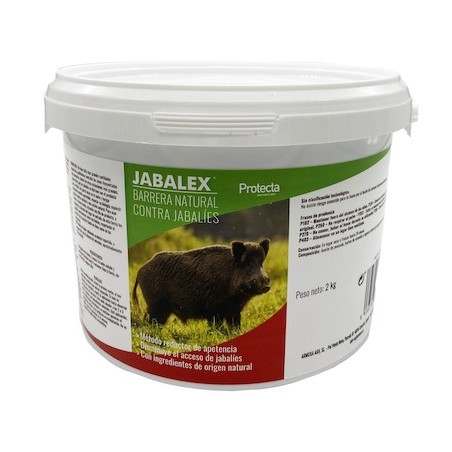February comes to an end with the pig price rising without a hitch. In Spain's reference market we have gone from 1.02 €/kg live at the end of January to 1.17 €/kg live in the last market session of the month, which is a much more optimistic price considering where we came from). A 15% rise in 5 weeks is exceptional. Germany has raised its carcass price by 12 cents per kilo in the last two weeks (this represents a 10% increase). No one doubts that the starting pistol signaling the start of recovery has been fired. We are getting a glimpse, at least in the distance, of the way out of the hell that producers have been in and are in. We are now on the road to recovery, even faster than expected.
There are not enough pigs currently in Spain to continue the record slaughter pace observed in January. There are not. The post-holiday surpluses were reabsorbed many weeks ago and, in order to continue the high slaughter rates, trucks and trucks of European live pigs are being imported to be slaughtered here in Spain. Belgium, Holland, France, and Germany (with ASF currently) are the leading suppliers.

Pig prices are going up, but prices of most pork cuts are not. Some 90% of the Spanish price rise has been paid for out the slaughterhouses' pockets, who have seen their margins vanishing and have clearly gone into losses. If pork prices do not go up, pig prices -necessarily- will not be able to go up much further. Before long, the slaughterhouses will lose 10 euros per pig: when that happens, demand will -by pure logic- slacken drastically.
We need pork prices to go up. All of Europe needs it. Here are some glimmers of hope that this will happen (hopefully sooner rather than later):
- COVID-19 restrictions are decreasing, or are in the process of decreasing, in almost all European countries; this should strongly boost consumption -and thus demand- in all foodservice channels.
- Reductions in slaughter (incipient right now, much more severe in the short term) are unavoidable throughout the EU. Fewer slaughterings means less fresh pork available.
- The bullish inertia of pig prices should facilitate price increases for some cuts, especially those preferred for fresh consumption (necks, loins, tenderloins).
- Exports to third countries continue at a very good pace (we are selling to new markets: Australia, Mexico, Colombia, and also Southeast Asia -without China- maintains a good buying pulse).
- In both Canada and the U.S., hog prices are up sharply and are more expensive than ever (in the last ten years) for this time of year. The United States reports a strong domestic market with very high demand and appears to be exporting below normal levels.
All significant operators (from the first to the last) in all the countries surrounding Spain report having large and significant quantities of pork in stock. It will take a large part of this stock to disappear for demand to become disturbed and prices to jump upwards. We believe that this is still a few weeks away. In any case, if demand behaves well (and everything points to the fact that, after two years, this will finally be the case) and if slaughtering continues at a minimum (and it will, since many pigs have disappeared after the massive slaughtering of sows, and many farms have left the business, not to mention the significant sanitary problems in piglets) it could easily happen that the reserves disappear in the blink of an eye.
We think the live hog market is in an unstoppable bullish phase and the pork market is like a tightly compressed spring about to launch. We repeat: we need pork prices to go up. All of Europe needs it.
We must not fail to comment on the obvious risk of ASF arriving in Spain. We believe Spain is in a high-risk time regarding the possibility of ASF reaching our farms; biosecurity is not scrupulous everywhere and it would only take a spark (a dirty transport vehicle, contaminated feed arriving, a traveling wild boar, ...) to ignite the wildfire of chaos. We believe that there is no such thing as being too cautious and that it is not enough to just cross our fingers; it is more necessary than ever (essential, imperative) that the entire industry recognizes how delicate and dangerous the current situation is. We can't even imagine the dreadful scenario we would have to live through if ASF were to arrive in Spain.
We must be vigilant, attentive, and alert, doing everything we can on our part. Wild boars are uncontrollable, but other factors do depend on humans. As we mentioned a month ago, we are missing tangible responses from our authorities: contingency plans, general prevention measures, public calls for responsibility, etc.
In our previous commentary, we referred in passing to the famous debate on macro-farms. We have prepared a table of pig densities that we believe helps put things in perspective. In this regard, we will say that numbers are neutral, have no feelings, and reveal the truth. We will leave each reader to draw their own conclusions from the following table.
Table 1. Pig slaughterings by area and population in different countries. Data for 2020.
| Country | Area (x1000 km2) |
Inhabitants (x1000) |
Slaughter (x1000 / year) |
Pigs slaughtered per km2 | Pigs slaughered per inhabitant |
|---|---|---|---|---|---|
| Netherlands | 41 | 17,000 | 16,600 | 404.80 | 0.97 |
| Denmark | 43 | 6,200 | 17,200 | 400.00 | 2.77 |
| Belgium | 31 | 12,000 | 11,100 | 358.00 | 0.93 |
| South Korea | 100 | 51,000 | 18,300 | 183.00 | 0.36 |
| Germany | 360 | 82,000 | 53,200 | 147.70 | 0.64 |
| Spain | 510 | 46,000 | 56,000 | 110.58 | 1.23 |
| China | 9,700 | 1,415,000 | 527,000 | 54.30 | 0.37 |
| United Kingdom | 240 | 67,000 | 11,100 | 46.25 | 0.1 |
| Japan | 380 | 127,000 | 16,700 | 43.90 | 0.13 |
| France | 540 | 65,000 | 23,200 | 42.90 | 0.36 |
| Poland | 310 | 38,000 | 11,100 | 35.80 | 0.29 |
| Italy | 300 | 59,000 | 10,600 | 35.30 | 0.18 |
| USA | 7.92 (*) | 325,000 | 131,500 | 16.60 | 0.40 |
| Mexico | 1,900 | 130,000 | 20,200 | 10.60 | 0.16 |
| Brazil | 8,510 | 211,000 | 49,300 | 5.79 | 0.23 |
| Colombia | 1,140 | 50,000 | 5,000 | 4.38 | 0.10 |
| Russia | 17,070 | 143,000 | 47,200 | 2.76 | 0.17 |
| Canada | 9,970 | 37,000 | 22,600 | 2.26 | 0.61 |
| Australia | 7,690 | 25,000 | 5,300 | 0.70 | 0.21 |
(*): Without Alaska
Let's end with a phrase that's very timely today from the brilliant and incomparable Charles Chaplin: "Nothing is permanent in this wicked world, not even our troubles."

Guillem Burset
Latest news:

The invasion of Ukraine by Russia is terrible news. From the pig farmer's point of view, the scenario appears Dantesque: financial markets in panic mode and sinking, gas 50% more expensive in the first hours, grain prices will rise... Fear, uncertainty, chaos, hysteria, confusion, paralysis... Let's hope to have a clearer perspective in the next commentary and hope the war will have ceased.







